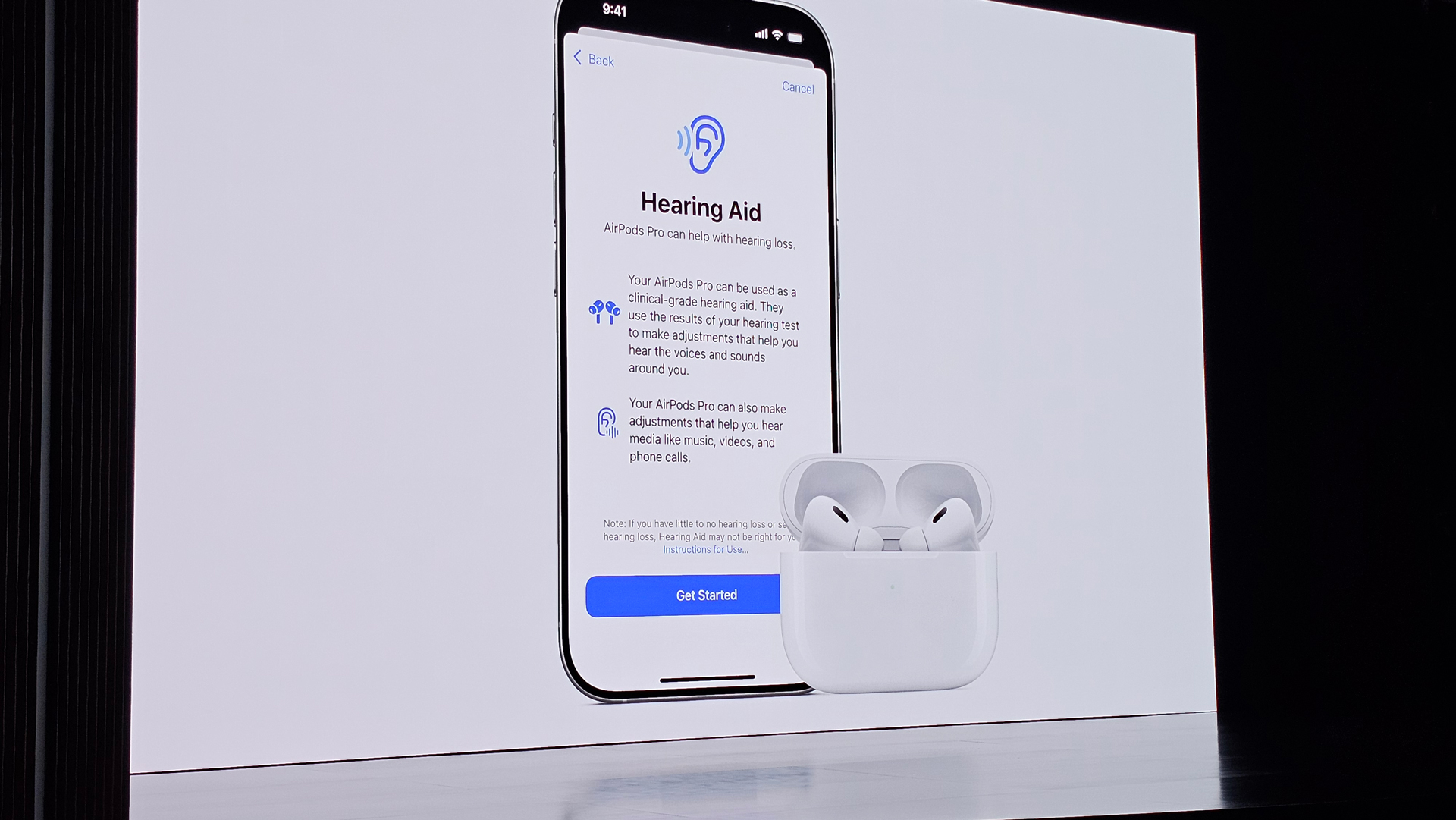The AirPods Pro 2’s big hearing aid upgrade will start rolling out next week – along with these 2 bonus features
AirPods Pro 2 are finally about to get those promised perks centered around your hearing

Apple AirPods Pro 2's promised suite of hearing health features, which could make the true wireless earbuds a viable alternative over-the-counter hearing aids for mild to moderate hearing loss, is nearly here. After being unveiled at the technology giant’s September 9, 2024 “It’s Glowtime.” event and receiving FDA approval on September 12, 2024, Apple’s now confirmed that the three-features-strong hearing health update will start to rollout as a software update starting next week.
So, if you have a pair of AirPods Pro second-generation with a USB-C or Lightning port, you’ll want to update them once the software begins rolling out. It will be one of the more significant updates to Apple’s flagship earbuds, allowing them to function as hearing aids for mild to moderate loss, amplifying the audio around you, allowing you to take a hearing test, and further protecting your hearing from environmental sounds.
In fact, AirPods Pro is the first over-the-counter (OTC) hearing aid software device authorized by the FDA in the United States. This was issued after an evaluation that included a study with over 100 participants, all of whom experienced mild to moderate hearing loss.
In a release on the authorization, the FDA said the results “demonstrated that subjects who used the HAF (read: Hearing Air Feature) self-fitting strategy achieved similar perceived benefit as subjects who received professional fitting of the same device.”
AirPods Pro 2 are the first over-the-counter hearing aid software buds to gain FDA approval in the US
These tests conducted by the FDA likely mirrored what Apple performed internally to test and create the feature. Once your AirPods Pro second-generation receive the latest firmware, you’ll be able to conduct a hearing test right from your iPhone. With it, the AirPods will check your environment, so you’ll want to be in a quieter space and will retest the fit of your ear tips to ensure a proper seal.
If it comes up that the fit isn’t ideal, it’ll ask you to swap to a different ear tip. You’ll need to find the box of your AirPods Pro for the additional sizes, or you can pick up an extra set of ear tips from Apple. You can get four pairs – extra small, small, medium, and large – for $12.99 online from Apple’s online store or find it at your local store.
Once the fit is good and you’re in a spot that is quiet enough, you’ll learn how the tests work and then dive right in. With the Hearing Test, you’ll see a graphic on-screen, and a set of tones – each pulse three times – will play for the left and right ear. It’ll last for about five minutes for each ear, and once done, you’ll get a result with a category given and the results – delivered in dBHL – plotted on a map.
Sign up for breaking news, reviews, opinion, top tech deals, and more.
If you receive a result for mild to moderate loss, you can turn on the Hearing Aid mode under Hearing Assistance. There, you can adjust the amplification, balance, tone, ambient noise reduction, and even turn on or off ‘Conversation Boost.’ You can also customize “Hearing Protection” features, but this will appear if you get a result higher or lower than mild to moderate. You can restest your hearing whenever you like with AirPods Pro and see the results within the Health app on your iPhone.
Apple will begin rolling out its hearing health features next week, first in the United States for AirPods Pro second-generation. Of course, if you still need a pair they’re currently on Amazon for $199 from $249 in the United States or £229.99 in the United Kingdom.
You Might Also Like...

Jacob Krol is the US Managing Editor, News for TechRadar. He’s been writing about technology since he was 14 when he started his own tech blog. Since then Jacob has worked for a plethora of publications including CNN Underscored, TheStreet, Parade, Men’s Journal, Mashable, CNET, and CNBC among others.
He specializes in covering companies like Apple, Samsung, and Google and going hands-on with mobile devices, smart home gadgets, TVs, and wearables. In his spare time, you can find Jacob listening to Bruce Springsteen, building a Lego set, or binge-watching the latest from Disney, Marvel, or Star Wars.